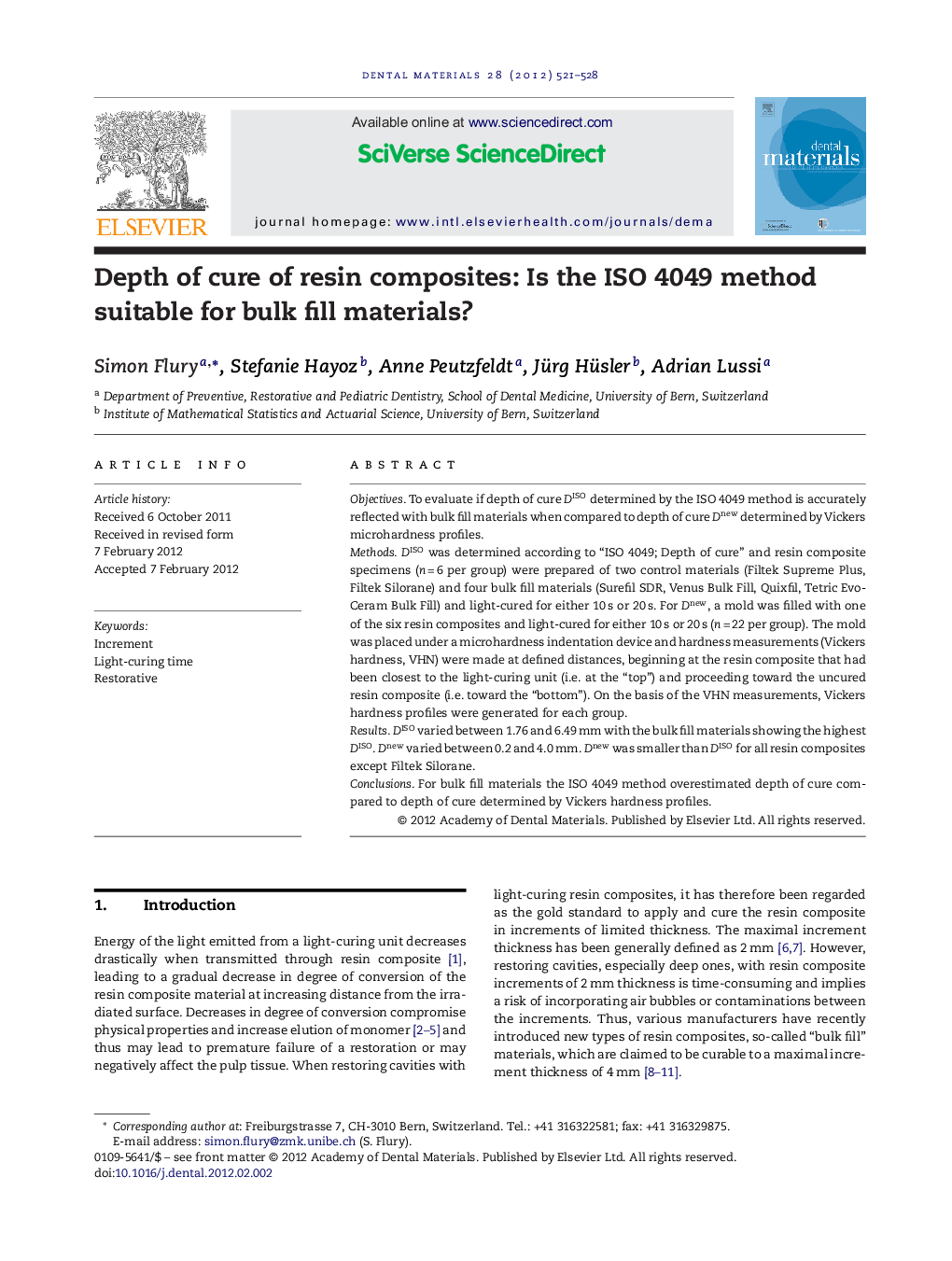| کد مقاله | کد نشریه | سال انتشار | مقاله انگلیسی | نسخه تمام متن |
|---|---|---|---|---|
| 1421404 | 986409 | 2012 | 8 صفحه PDF | دانلود رایگان |

SummaryObjectivesTo evaluate if depth of cure DISO determined by the ISO 4049 method is accurately reflected with bulk fill materials when compared to depth of cure Dnew determined by Vickers microhardness profiles.MethodsDISO was determined according to “ISO 4049; Depth of cure” and resin composite specimens (n = 6 per group) were prepared of two control materials (Filtek Supreme Plus, Filtek Silorane) and four bulk fill materials (Surefil SDR, Venus Bulk Fill, Quixfil, Tetric EvoCeram Bulk Fill) and light-cured for either 10 s or 20 s. For Dnew, a mold was filled with one of the six resin composites and light-cured for either 10 s or 20 s (n = 22 per group). The mold was placed under a microhardness indentation device and hardness measurements (Vickers hardness, VHN) were made at defined distances, beginning at the resin composite that had been closest to the light-curing unit (i.e. at the “top”) and proceeding toward the uncured resin composite (i.e. toward the “bottom”). On the basis of the VHN measurements, Vickers hardness profiles were generated for each group.ResultsDISO varied between 1.76 and 6.49 mm with the bulk fill materials showing the highest DISO. Dnew varied between 0.2 and 4.0 mm. Dnew was smaller than DISO for all resin composites except Filtek Silorane.ConclusionsFor bulk fill materials the ISO 4049 method overestimated depth of cure compared to depth of cure determined by Vickers hardness profiles.
Journal: Dental Materials - Volume 28, Issue 5, May 2012, Pages 521–528